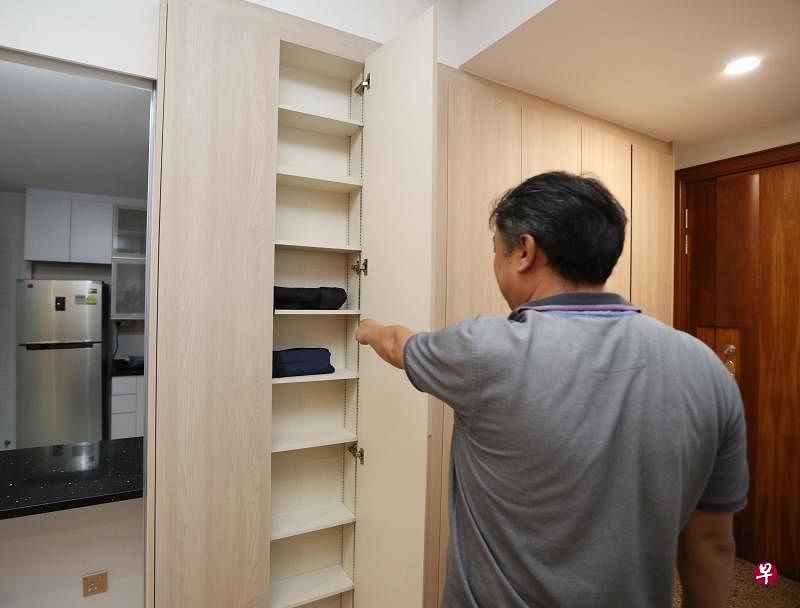
Local construction -related enterprise groups actively propose industry standards to monitor indoor air quality, especially formaldehyde release concentration, which is a timely and necessary industry specification for this building and decoration materials with harmful nature.
The Sustainable Sustainable Space Action Alliance jointly established by the Singapore Industry and Commerce Federation, the Singapore Furniture Industry Council and the Singapore Green Architecture Committee, recently called on the government to regulate the formaldehyde concentration released by the indoor products in the government, and formulate reward measures to promote enterprises to adopt low -emission products.It shows that the industry has begun to notice that formaldehyde has not been strictly regulated in decoration and building materials, which has the impact on residents and indoor space users.These suggestions, including the industry, must test the products, obtain proof to sell, and also provide proof of the selling products that meet the emission standards, and so on.
Formaldehyde is generally used in decoration and building materials, especially various wooden products, as well as walls, cabinets, furniture paint, coatings, etc., including three grampings, fiber boards, sound insulation boards, and some insulation materials.For newly built or newly renovated houses or office spaces, the release of formaldehyde is a challenge for the health of space users. The harm of these irritating pollutants in the indoor environment has not attracted solemn concern for local society.
The local industry has begun to pay attention to the issues, and it is also related to people during the crown disease epidemic situation. People pay more attention to indoor ventilation and air quality.From the 1970s to the 1980s, Europe and the United States and Japan began to notice the problems of damage caused by indoor air pollution in the building to human health. The air quality guidelines have been introduced. The World Health Organization also formulated relevant guidelines in 1987.
The International Cancer Research Institutions (IARC) under the WHO (IARC) listed formaldehyde as a substance that can cause cancer and deformity, exceeding a specific concentration, not only to cause irritating taste and smell, but some people will also cause skin allergies such as skin and other allergiesThe reaction, for people who stay indoors for a long time, long -term inhalation of toxic pollution particles released by formaldehyde may cause lesions such as respiratory systems, various inflammatory, skin diseases, nervous systems, and immune systems.
More seriously, formaldehyde pollutants may harm the normal development of pregnant women and fetuses and children, and some diseases may be related to the toxic substances released by the materials used in the indoor space for a long time.Therefore, some countries have a stricter air quality and formaldehyde concentration testing requirements for long -term environment for young children who have not yet improved their physiological development for a long time.In addition to being unfavorable to space users, formaldehyde may also cause direct damage to decoration and construction staff.
The local people and the industry still have not awareness of formaldehyde.In April last year, the Sustainable Space Operation Alliance officially issued the "Reduction of Formaldehyde", hoping to help suppliers and operators more actively adopt more environmentally friendly and healthy building materials, and at the same time seize the business opportunities of the green economy.
Formaldehyde is also widely used in industrial sterilization, disinfection, as well as anti -corrosion and medical experiments, but it is a natural product that produces the metabolic process of organic matter. Therefore, it is difficult to replace and safe products.actual.However, there are already more and more low formaldehyde and more environmentally friendly products on the market. In terms of use, as long as the standards of international institutions such as WHO have strengthened supervision, they can roughly minimize the harm.
Lin Mingyan, chairman of the Federation of Industry and Commerce, pointed out that this new industry standards can help fill the vulnerabilities of the existing air quality guidance.
Sustainable Development and Environment Minister Fu Haiyan pointed out that the government will seriously consider formulating regulatory regulations in accordance with the suggestion of the standards, but legislative work must be planned in detail. More importantly, the audit and law enforcement work after the regulatory regulations are formulated.
After three years of epidemic, the government, enterprises, and individuals have even realized the importance of indoor air quality and the effective circulation of air. In addition to avoiding harmful substances in indoor cycles, the spread of danger or even viruses, the quality of indoor building materialsPerhaps potential health risks are also wider.
For a long time, the public and even some industry players and practitioners do not know this aspect. It is because local residential and industrial buildings have paid attention to ventilation.Perhaps it is the shortcomings of publicity and popularization.If the government can echo the action alliance and formulate industry supervision that meets international standards, it will help expand the understanding of the public, and further combine the health of the people to deepen the connotation of the 2030 Singapore green plan.


